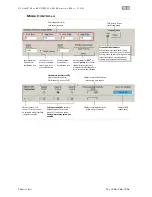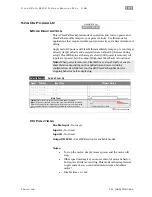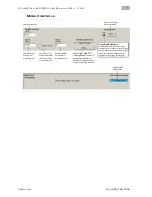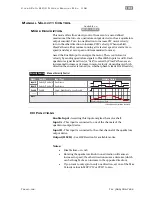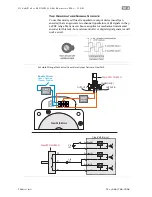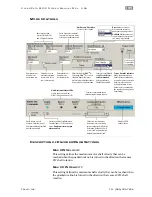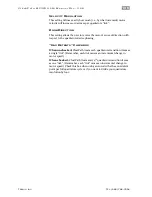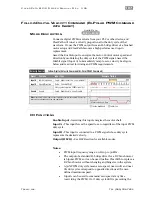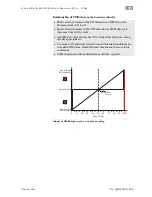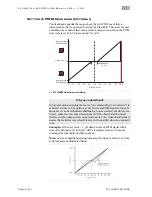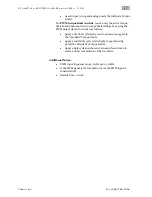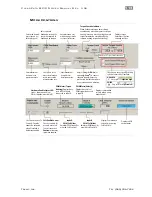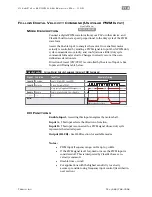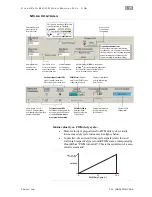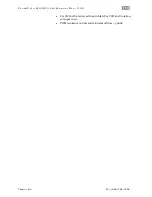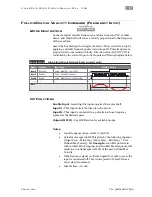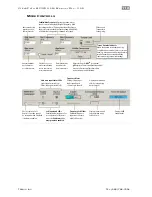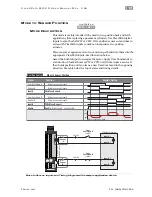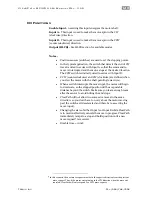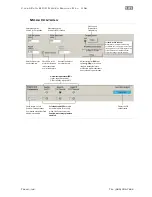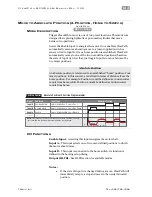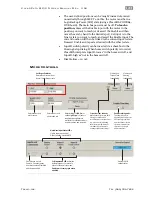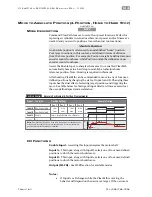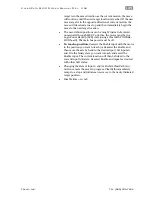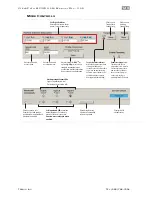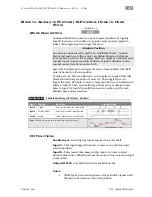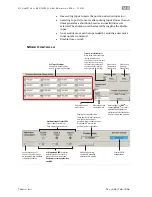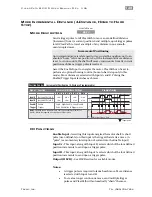
C
L E A R
P
A T H
M C / S D
U
S E R
M
A N U A L
R
E V
.
3 . 0 9
1 1 4
T
EKNIC
,
I
NC
. T
EL
.
(585)
784-7454
F
OLLOW
D
IGITAL
V
ELOCITY
C
OMMAND
(U
NIPOLAR
PWM
I
NPUT
)
M
ODE
D
ESCRIPTION
Connect a digital PWM waveform from your PLC or other device, and
ClearPath will run at a speed proportional to the duty cycle of the PWM
waveform.
Assert the Enable Input to energize the motor. Once enabled, motor
velocity is controlled by sending a PWM signal to Input B. 0% PWM duty
cycle commands zero velocity, and 100% (minus a little) duty cycle
commands full-scale velocity. Changes in velocity occur at the user-
defined acceleration rate.
Direction of travel (CW/CCW) is controlled by the state of Input A. See
Inputs and Timing table below.
Signal
Function
Input Type
Input A
Motor velocity vs. time
Input B
Enable
Direction
Velocity
Enable
NA
NA
Trigger
Logic: High=CW Low=CCW
Pulse: Variable PWM
Logic: High=Enable Low=Disable
0
1
0
1
t
v
Example Timing
Notes:
0
1
0
1
Duty cycle of applied PWM signal (%)
90%
10%
OFF
Follow Digital Velocity Command (Unipolar PWM Command)
Velocity Control
I/O
F
UNCTIONS
Enable Input -
Asserting this input energizes the motor shaft.
Input A -
This input selects the direction of rotation.
Input B -
This input is connected to a PWM signal whose duty cycle
represents the desired speed.
Output (HLFB) -
See HLFB section for available modes.
Notes:
•
PWM input frequency range: 20 Hz up to 30 kHz.
•
If the PWM signal is off for 50mS or more the PWM input is
considered off. This is interpreted by ClearPath as a zero-
velocity command.
•
Disable time = 10 mS
•
For applications with the highest sensitivity to velocity
accuracy, consider using frequency input control (described in
next section).
MCVC + MCPV
Available on

